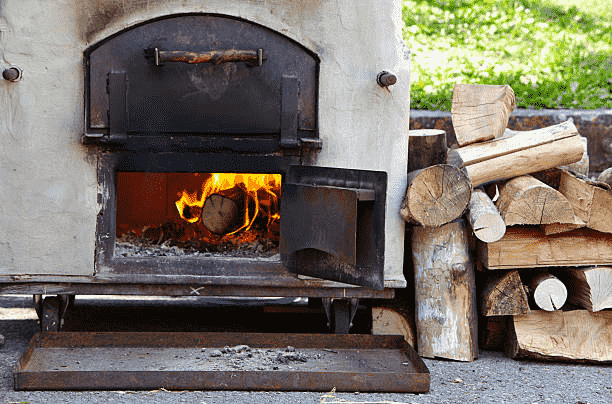Efficiency Unleashed: Maximizing Heat with Outdoor Wood Burners

As the demand for sustainable and efficient heating solutions continues to rise, outdoor wood burners have emerged as a popular choice for homeowners seeking both warmth and eco-friendly alternatives. These innovative devices harness the power of wood combustion to generate heat, providing a cost-effective and renewable source of warmth.
In this comprehensive guide, we will delve into the world of outdoor wood burners, exploring their efficiency, benefits, installation considerations, and environmental impact.
Understanding Outdoor Wood Burners
How Outdoor Wood Burners Work
Outdoor wood burners, also known as outdoor wood furnaces or boilers, operate by burning wood in a controlled environment to produce heat. These units are typically installed outside the home and are connected to the central heating system through pipes.
Wood is loaded into the burner, where it undergoes combustion, and the generated heat is transferred to the water or air circulating in the heating system. This heated water or air is then distributed throughout the home, providing warmth to various rooms.
Types of Outdoor Wood Burners
There are two main types of outdoor wood burners: traditional outdoor wood boilers and newer, more advanced gasification boilers.
Traditional boilers burn wood in a firebox, while gasification boilers utilize a more sophisticated process that extracts additional heat from the wood, resulting in higher efficiency and lower emissions.
Advantages of Outdoor Wood Burners
Cost-Effective Heating
One of the primary advantages of outdoor wood burners is their cost-effectiveness. Wood, a renewable resource, is often more affordable than other heating fuels such as natural gas or electricity. Additionally, many homeowners can source wood locally, further reducing costs.
Energy Independence
Outdoor wood burners provide a degree of energy independence to homeowners. Relying on wood, a domestically available resource, reduces dependence on external energy sources and contributes to a more sustainable and resilient energy supply.
Reduced Environmental Impact
Compared to traditional indoor wood stoves, outdoor wood burners are designed to burn wood more efficiently, minimizing air pollution and reducing their environmental impact.
The use of gasification technology in modern outdoor wood burners significantly decreases emissions, making them a cleaner option for heating.
Maximizing Efficiency: Tips for Effective Operation
Proper Wood Selection
The efficiency of an outdoor wood burner is closely tied to the type and quality of wood used. Hardwoods such as oak and maple generally produce more heat and burn longer than softwoods like pine.
Properly seasoned wood with low moisture content is ideal for efficient combustion, as it generates more heat and produces less creosote buildup in the chimney.
Optimal Loading and Combustion
To maximize efficiency, it’s essential to load the wood burner with the right amount of fuel and maintain proper combustion conditions. Overloading can lead to incomplete combustion and reduced efficiency, while underloading may result in wasted energy.
Learning the optimal loading and combustion practices for your specific wood burner model is crucial for achieving peak performance.
Regular Maintenance
Like any heating system, outdoor wood burners require regular maintenance to operate efficiently. Cleaning the firebox, chimney, and other components is essential to prevent the buildup of creosote and ensure proper airflow.
Additionally, inspecting and replacing gaskets, checking for leaks, and lubricating moving parts contribute to the longevity and efficiency of the system.
Installation Considerations
Location and Clearance
Proper installation is key to the effective and safe operation of outdoor wood burners. Selecting an appropriate location with sufficient clearance from combustible materials is crucial.
Manufacturers provide guidelines regarding the recommended distance between the unit and structures, ensuring both safety and optimal performance.
Heat Distribution System
Choosing the right heat distribution system is another critical consideration during installation. Outdoor wood burners can be connected to forced-air systems, hydronic systems, or a combination of both.
The choice depends on the specific heating needs of the home and existing infrastructure.
Insulated Underground Piping
Insulated underground piping connects the outdoor wood burner to the indoor heating system. Proper insulation is essential to minimize heat loss and maintain the efficiency of the system.
Investing in high-quality, properly insulated piping ensures that the heat generated outdoors reaches its destination without unnecessary losses.
Environmental Impact and Regulatory Compliance
Emission Standards
While modern outdoor wood burners are designed to be more environmentally friendly than their predecessors, it’s crucial to be aware of emission standards and regulatory requirements in your area.
Some regions have strict guidelines to limit air pollution from wood-burning appliances. Choosing a compliant and certified outdoor wood burner ensures that your heating system meets or exceeds these standards.
Sustainable Wood Sourcing
To further mitigate the environmental impact, homeowners should prioritize sustainable wood sourcing.
This involves using wood from responsibly managed forests or choosing recycled wood products. By adopting sustainable practices, users can contribute to the preservation of forests and biodiversity.
Conclusion
Outdoor wood burners represent a compelling option for homeowners seeking efficient, cost-effective, and sustainable heating solutions. By understanding how these systems work, embracing best practices for operation and maintenance, and considering key installation factors, individuals can unlock the full potential of outdoor wood burners.
As technology continues to advance and environmental awareness grows, these outdoor heating systems are likely to play an increasingly important role in creating comfortable homes while minimizing their impact on the planet.


